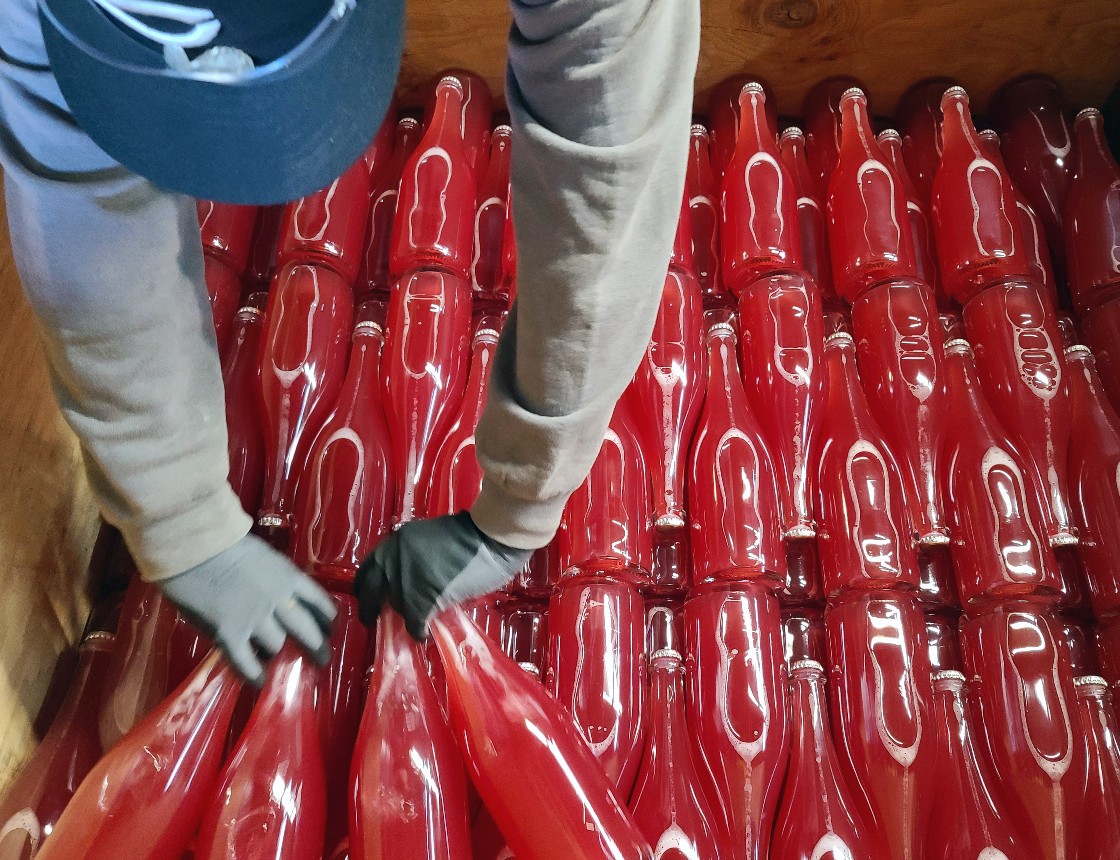


Sparkling Wines age magnificently — especially vintage bubblies in magnum, but as with everything associated with wine, the deeper you delve into the topic, the more interesting and nuanced it becomes. How long Sparkling Wines last depends on the quality of the wine, how long it was aged en tirage, when it was disgorged (finished with the addition of dosage and corked), the size of the bottle, how it has been stored and, most importantly, personal taste. One person’s golden, rich, nutty, “aged character” could seem “over the hill” to someone else.
There are two types of aging with bubbles: on the yeast in the bottle … and then, on the cork. The longer the wine is aged on the yeast in the bottle, the smaller the bubbles, the more elegant the mouth feel, and the longer the Sparkling Wine will last.
Non-vintage bubblies are typically aged 18 months. Vintage Sparkling Wine must be aged a minimum of three years en tirage and, Tête de Cuvée, seven to eight years. Our current release of Joy! is vintage 2006, aged 14 years on the yeast and a year on the cork, which, for my taste, is drinking better than the day it was disgorged. It will also gain complexity after another year or so aging on the cork.
Of course, predicting how long a Sparkling Wine will last is like trying to gauge when a sunset will peak into its brightest colors. You have to keep watching or, in the case of bubbly, tasting it over time.
The bright acidity inherent in top quality bubbly contributes to longer age ability. Being able to achieve that perfect balance of fully mature flavors with crisp acidity is site specific. The best regions for bubbly in California are San Luis Obispo on the Central Coast, Carneros, Russian River, most specifically Green Valley – the coolest, foggiest part of the Russian River Valley — and Anderson Valley in Mendocino. Being in cool, foggy Green Valley where Iron Horse is means our grapes ripen more slowly and achieve fully mature flavors while retaining a briskness that gives our wines finesse and longevity.
1) Age ability is governed by acidity and, more importantly, pH. Generally, cool climates yield wines of higher acidity and lower pH, which age longer, have brighter color, brighter and fresher aromas and flavors.
2) Also, vintage bubbly is typically composed of the first “fraction” of juice to come out of the press (see below), which also extends how long the Sparkling will last. From a given ton of grapes, we might get a total of 160 gallons of juice. The first cut, approximately 80 gallons, is superior in quality, higher in sugar, higher in acidity, lower in pH, lower in color, clearer, and lower in astringency. These qualities mean the wine will oxidize much more slowly.
3) Bottle size matters. The wine will age more slowly in a magnum because it is only exposed to the same amount of oxygen as in a regular bottle.
4) Storage also contributes to how long Sparkling Wines will last. The ideal location is a cool, dark place. Most important is consistent temperature and avoiding direct sunlight.
Our current releases of 2018 Classic Vintage Brut and 2018 Wedding Cuvée in 750 ml bottles should easily and very conservatively last five years from the day of purchase.
Per a recent anecdote, our 2012 Classic Vintage Brut was served at a Yale Club of New York Council Dinner this summer — their first in-person event since the pandemic. Let’s do the math: The grapes were harvested in 2012. The blend laid down for aging in Spring 2013. The bottles were disgorged in 2016 and then purchased in 2016 – 2017. It’s drinking beautifully in 2022, which isn’t to say five years is how long a Sparkling Wine will last, but this is a safe window.
For magnums, I would say ten years, without reservation. Though magnums are hard to resist drinking freshly disgorged because that brightness — before very little oxygen is introduced — belies the aged character of time on the year.
That said, our friend Aaron Legare posted on our Facebook Page about opening a bottle of Iron Horse Vineyards 1991 Brut LD. Again, let’s do the math: Vintage 1991, base wine laid down for aging in Spring 1992, then aged en tirage seven years and disgorged in 1999! That’s 23 years on the cork since it was “picked up in a shop a couple of years ago” and consumed recently. How it was stored is unknown but Aaron’s tasting notes say: ”A few fine bubbles left. Tasted of cognac and candied lemon. Interesting and enjoyable.” Note the color of the wine in the glass looks lovely (see this image in the comments on the post).
Cheers to bubblies getting better with time!